| |
1
The Tatra Mountains: the rocky peak of a flat country, which pe- netrates south into the land of the bordering Slovakia. Zakopane: a small town at the centre of this peak. Budapest and Vienna are closer than Warsaw, but it is right here, in these places that, for better or worse, all the typical aspects of Poland and the Poles are concentrated.
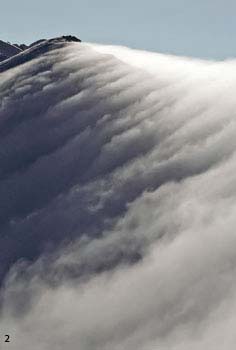 A belt of dark clouds banked on the mountains. A cold wind similar to the one that blows on the Alps. In the air a vortex of leaves and broken branches. Pushed once again by a gust the passers-by stoop on the pavement. From the woods of old ash trees in the middle of a meadow in the heart of the village, a guttural chant can be heard, typical of the inhabitants of these mountains, a penetrating and moving chant, that has little to do with the concept of harmony and musical melody. The trees creak, the metal plates on the straw roofs of the houses reverberate, the glass windows tinkle. An atmosphere of tension, something is about to arrive, something is going to happen. The sun rays, as sharp as a razor, highlight every vein on the near mountainsides, every knot in the thick beams of the wooden houses, every crack in the plasterwork of the modernistic buildings. They dwell for a moment on the figure of a man with a light-coloured coat and a ruffled head of grizzled hair. “Poems about the Tatras! Poems about the Tatras!”, he shouts with a hoarse voice flourishing a small book with his poems. He is thin and tall, he is well over seventy. The holiday-makers pass by him with the same indifference with which they pass next to the souvenir shops, the stands with goat’s cheese, the smoking barbecues on which grilled sausages go black, and the sticky pub counters due to spilt beer. Henryk Szulczyński comes from the region of Wielkopolska (Greater Poland), during his youth he had been victim of the Nazi doctors' experiments. He had spent all the money received by way of compensation for loss of health to publicize his books of poems, which according to everyone were the works of a graphomaniac. He died in 2003. The inhabitants of the place also know another paradox about Szulczyński’s life. He wrote about the Tatras, which were his passion, but he never went to the mountains…because he suffered from vertigo. A belt of dark clouds banked on the mountains. A cold wind similar to the one that blows on the Alps. In the air a vortex of leaves and broken branches. Pushed once again by a gust the passers-by stoop on the pavement. From the woods of old ash trees in the middle of a meadow in the heart of the village, a guttural chant can be heard, typical of the inhabitants of these mountains, a penetrating and moving chant, that has little to do with the concept of harmony and musical melody. The trees creak, the metal plates on the straw roofs of the houses reverberate, the glass windows tinkle. An atmosphere of tension, something is about to arrive, something is going to happen. The sun rays, as sharp as a razor, highlight every vein on the near mountainsides, every knot in the thick beams of the wooden houses, every crack in the plasterwork of the modernistic buildings. They dwell for a moment on the figure of a man with a light-coloured coat and a ruffled head of grizzled hair. “Poems about the Tatras! Poems about the Tatras!”, he shouts with a hoarse voice flourishing a small book with his poems. He is thin and tall, he is well over seventy. The holiday-makers pass by him with the same indifference with which they pass next to the souvenir shops, the stands with goat’s cheese, the smoking barbecues on which grilled sausages go black, and the sticky pub counters due to spilt beer. Henryk Szulczyński comes from the region of Wielkopolska (Greater Poland), during his youth he had been victim of the Nazi doctors' experiments. He had spent all the money received by way of compensation for loss of health to publicize his books of poems, which according to everyone were the works of a graphomaniac. He died in 2003. The inhabitants of the place also know another paradox about Szulczyński’s life. He wrote about the Tatras, which were his passion, but he never went to the mountains…because he suffered from vertigo.
“The prolonged influence of the atmosphere of Zakopane […] even turned relatively strong action men into pseudo-contemplators, engaged only in observing the changes that make way into their corrupted and poisoned minds”. This was written in 1919 by Stanisław Ignacy Witkiewicz (1885–1939), painter, photographer, art theorist, writer, known with the pseudonym Witkacy. He was a man of great and versatile talent, and at the same time a scandalmonger and provoker. Even after his death he pulled a trick on his compatriots. The communist authorities had decided to take his remains back from the Sovietic Union to Poland. In the spring of 1988 a metal coffin containing human remains was transferred from the village of Jeziory in Ukraine to Maria Witkiewiczowa’s grave, the artist’s mother. The funeral at the Pęksowy Brzyzek, the historical cemetery of Zakopane, was unusually ceremonious and even quite pompous. The day after rumours started circulating about the exhumation of the artist being carried out with too much haste and it was not certain who the remains buried in Zakopane belonged to. In Poland, by that time democratic, it was decided to verify the contents of the coffin. It was discovered that instead of the Polish artist, a young woman, very likely a Ukrainian, had been buried in Maria Witkiewiczowa’s grave. 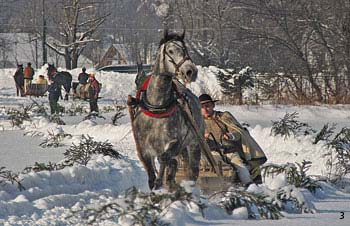
Let's leave aside Witkacy’s post mortem buffoonery and go back to his thoughts from 1919: “Zakopane used to be called Poland's spiritual capital. We would define it otherwise: the general factory of a particular and typically Polish drug, zakopianina”. It is not the town per se that has a demoniacal influence on people, nor the pensioners, the cafés or the sanatoria, and not even the alcohol or nicotine but, as the artist writes, "nature itself, the way it yields, the way it subsides, the way it is buried in the mountains, which with their narcotic beauty block the way to life, it is a physical burial that leads to a far much worse inner self burial”.
Ninety years have gone by, these days Zakopane is different from how it was then, but it is still a “general factory of zakopianina”. The action of this typically Polish narcotic provokes an intricate maze of contradictions. Kitsch and graphomania go hand in hand with talent. Popular culture mingles and intertwines with high culture. Voracious capitalism next to naive idealism. True art next to commercial trash. Farmers’ modest wooden houses, relicts of a far past, and cement urbanized areas, reminiscences from the not so remote real socialism, leave space to larger modern houses and mountain-style inns. In the sea of architectonic ugliness, isolated pearls shine, beautiful and original houses. Artists and graphomaniacs, the rich and the poor, preservers of nature and technocrats, Catholics and atheists, local people and foreigners from the plains, all wrapped up in themselves, when the mountains wind approaches, get together to drink vodka.
The location of Zakopane favours such a concentration. Indeed, the city is situated in a valley at the foot of the Tatras, closed off on one side by the calcareous wall of Mount Giewont, which rises for almost a thousand metres above the streets and houses, and on the other side by the low and mild summit of Mount Gubałówka. Here we find the last stop of the railway line, which departs from Krakow, here the last bus rides from almost all of Poland end. Finally, here the motorway will end, that motorway that has been in course of construction for years and is object of endless debates.
For a long time the inhabitants of these places had little contact with the outside world. This allowed them to preserve their original dialect, which is believed to be similar to the ancient Polish language. They have created their own building style, making wooden houses with large trunks cut down the pith and without the use of nails. They have given life to an actual culture, related to transhumance on the mountain pastures. The particular proudness of these people comes from the fact that, living isolated in an inhospitable land with a rigid climate, they did not experience feudal subjection. In the nineteenth century, the Polish intellectuals, mainly thanks to Tytus Chałubiński, a doctor from Warsaw, “discovered” Zakopane. The elite of a population without its own state fell in love with the mountains and their inhabitants. In these simple people, in their strong character, in their arcaic language and in their culture, they identified the essence of the Polish spirit. Stanisław Witkiewicz (1851–1915), Witkacy’s father, drawing inspiration from the local buildings, even created a new architectonic style, called "Zakopane style", and tried to divulge it as the national style all over the Polish territory.
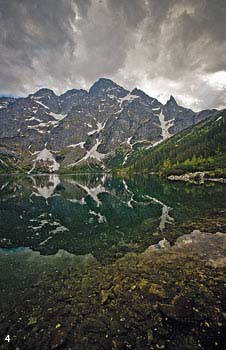 Writers, poets, musicians, sculptors, painters, there are many Polish artists bound to the Tatra Mountains and Zakopane. To an non-Polish reader their names may sound like an abstract list. Let's cite just some of them as examples. Writers, poets, musicians, sculptors, painters, there are many Polish artists bound to the Tatra Mountains and Zakopane. To an non-Polish reader their names may sound like an abstract list. Let's cite just some of them as examples.
Mieczysław Karłowicz (1876–1909), defined as the greatest Polish composer after Chopin, created songs and poems that were innovative and symphonic for his time. In his works the Tatras do not appear explicitly, their role was different, they widened the artist's imagination, who spent a lot of time on the mountains and even climbed difficult rocky pathways. He disappeared during a skiing excursion, swept away by an avalanche.
Karol Szymanowski (1882-1937) arrived in Zakopane to cure himself from tuberculosis and he stayed there for a long time. He was fascinated by the folk music of these places, the Tatras and the mountaneers come alive in his works.
Henryk Mikołaj Górecki (born in 1933), perhaps the most eminent contemporary Polish composer, believes he is a spiritual heir of Szymanowski. Native to Slesia, for years he spent his holidays at the foot of the Tatras. Now he lives in Zab, the highest Polish village, located at two-hundred metres above the valley of Zakopane.
Among the sculptors it is worth mentioning two disciples of the same master. Antoni Rząsa (1919–1980) and Władysław Hasior (1928–1999) studied at the Art Lyceum of Zakopane under the direction of Antoni Kenar (1906–1959), sculptor and climber. The former used to create wooden figures with simple forms and an extraordinary condensation of emotions that represented people who were suffering, in love, sentimental, warm-hearted. He never achieved general recognition, and even nowadays some people talk about him with haughtiness, as a popular sculptor of religious figures. The latter became famous as an avant-garde artist, provoking and transgressive (an example is given by his composition of dolls pierced with forks), but during the last years of his life he was attacked for his connection to the communist regime (think about the monument to the police officers who died fighting against the underground movements for national independence).
It is difficult to mention all the painters that in their works have shown the Tatra mountains, we will cite just one, whose talent outshone all the others, although he did not achieve the place he deserved in the Polish cultural conscience. Andrzej Wróblewski (1927–1957) painted these mountains in the most simple and true way. He died in mysterious circumstances during a solitary excursion on the Tatras.
We will overlook the poets, as they were never completely translatable in foreign languages. Of the writers we will only cite Jalu Kurek (1904–1983), who collected a large amount of material on the history of the Tatras and Zakopane and mixed true facts with creations of his fantasy. This way he built the Book of the Tatras (Księga Tatr), a controversial work in two volumes, which on the one hand deviates those who are looking for the historical truth, and on the other hand faithfully what we defined in the title of this text as the atmosphere of Zakopane, an atmosphere that originates from the Tatras, extraordinary mountains.
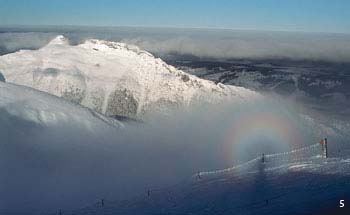 This concentration of every alpine attraction (except for glaciers) on such a small surface exerts such a strong attraction that every year millions of Poles set off towards the south to spend there at least a few days. Despite the huge flow of tourists, the Tatras are still wild places, where there are more wolves than on all the mountains of Austria and more bears than on the immense Italian Alps. Obviously, there are also places defaced by man, such as the Kasprowy Wierch with the cableway and chairlift. However, in general, on the Tatras the man-made shepherds’ chalets and huts preserve a high aesthetic standard, as if they feel a sense of respect towards the beauty of nature. Their shape, as in the case of the hut in the Dolina Pięciu Stawów Polskich (Valley of the Five Polish Ponds) represents a model of symbiosis between nature and culture. But this cannot be described, it has to be seen with one’s own eyes. It is possible to get there by car from the Italian Dolomites in less than ten hours, without a passport, as the Tatra Mountains have been part of the Schengen area for a year now. This concentration of every alpine attraction (except for glaciers) on such a small surface exerts such a strong attraction that every year millions of Poles set off towards the south to spend there at least a few days. Despite the huge flow of tourists, the Tatras are still wild places, where there are more wolves than on all the mountains of Austria and more bears than on the immense Italian Alps. Obviously, there are also places defaced by man, such as the Kasprowy Wierch with the cableway and chairlift. However, in general, on the Tatras the man-made shepherds’ chalets and huts preserve a high aesthetic standard, as if they feel a sense of respect towards the beauty of nature. Their shape, as in the case of the hut in the Dolina Pięciu Stawów Polskich (Valley of the Five Polish Ponds) represents a model of symbiosis between nature and culture. But this cannot be described, it has to be seen with one’s own eyes. It is possible to get there by car from the Italian Dolomites in less than ten hours, without a passport, as the Tatra Mountains have been part of the Schengen area for a year now.
The Tatra Mountains are the highest mountain range of the Carpathians. They have a surface of 785 km2, 4/5 of which belong to Slovakia and 1/5 to Poland. They extend over a straight line for a length of 53 km, and a width fluctuating between 15 and 19 km. The highest peak is Mount Gerlach, 2655 m above sea level, which is entirely on the Slovakian territory. The highest peak of the Polish Tatras, and of all Poland, is Mount Rysy, 2499 m above sea level. The largest and most famous lake is Morskie Oko, with a surface of 34.5 ha and a depth of 50.8 m. The highest wooded limit is situated at 200-300 m lower than on the Alps. Under the high mountain fir woods, pinus mugo woods grow with isolated cembras. The original fir woods and beechwoods, which in the lower areas of the mountains used to extend over wide lands, have been replaced by a monoculture of fir woods. The fauna is rich in species: goats (from 600 to 700 specimens), marmots (about 300), bears (12-17), 2 or 3 packs of wolves, a few lynx, a few couples of golden eagles. The nature of these mountains has been put under protection. In the Slovakian part the Tatranský národný park (National Park of the Tatras Mountains) has existed since 1949, while in the Polish area the Tatrzański Park Narodowy (National Park of the Tatras Mountains) has existed since 1954.
Zakopane is a town in the voivodeship of Małopolska (Smaller Poland), where the district of the Tatras is located, at a height of 740-1120 m above sea level. Number of inhabitants. 28,000. It is visited every year by about 3 million tourists. It was mentioned for the first time in 1578, it became parish in 1848, it achieved the status of urban municipality in 1933. The main cutlural and recreational events are the Championships on ancient skis for the Easter Egg (Easter Monday), the Festival of the First of May on the Tatras (beginning of May), the International Festival of alpine folklore (August), the Meetings with the Mountain Cinema (September), the Jazz Camping Kalatówki (October).
Text translated from Polish
- photo: Adam Brzoza
- photo: Marcin Józefowicz
- photo: Adam Brzoza
- photo: Adam Brzoza
- photo: Marcin Józefowicz
- photo: Marcin Józefowicz
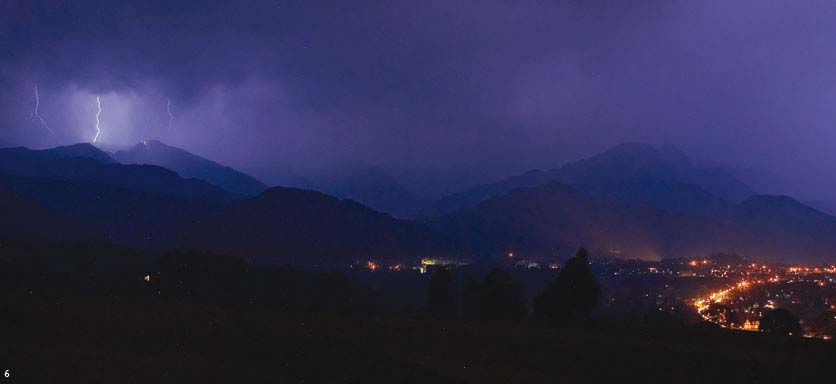
|
|